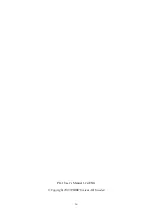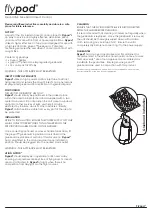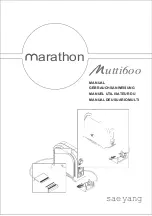
5
2.3 Filling the Manual Dispenser
For testing with different liquids it is recommended to use a separate dispensing unit for each
test liquid to avoid contamination of test liquids. To fill the manual dispensing unit, use the
procedure below.
PLEASE NOTE! The manual dispenser can not be used for test liquids of high viscosity or
quickly drying solvent inks (e.g. rotogravure ink.) To apply liquids of high viscosity, please
see Section 2.7.
a) Remove the manual dispenser from its
storage space by unscrewing the knob at the
short end of the instrument, next to the light
button.
b) Rotate the volume wheel until it is in
the top position under the applicator knob.
c) Insert the dispensing tip into the test liquid
and fill the dispensing unit with a few pump
strokes.
Move the plunger slowly to avoid air
sucked into the dispensing unit from the rear
end.
d) Turn the dispensing unit with the tip pointing
upwards and tap gently on the dispenser to bring air bubbles inside the liquid to the top.
Push the plunger slightly forward to remove the air at the tip. Rotate the volume wheel
forward until it barely touches the end of the dispenser. Then press at the end of the shaft
and a small droplet should appear at the dispensing tip.
Make sure there are no visible
air bubbles inside the liquid system
.
e) Check the PTFE sleeving is adapted at the dispensing tip. Without this sleeving the test
liquids might climb on the outside of the tip because of wetting forces.
f) Insert the dispensing unit into the dispensing bridge.
PLEASE NOTE! If different test liquids are to be used it is extremely important to avoid
contamination as this will change the liquid properties resulting in an erroneous contact
angle. To avoid tedious cleaning of the manual dispenser each time a different liquid is used,
it is recommended to use dedicated dispensers for each liquid.
Fig. 2.2 Manual Dispenser
Plunger
Dispensing tip
Volume wheel
Applicator knob



































